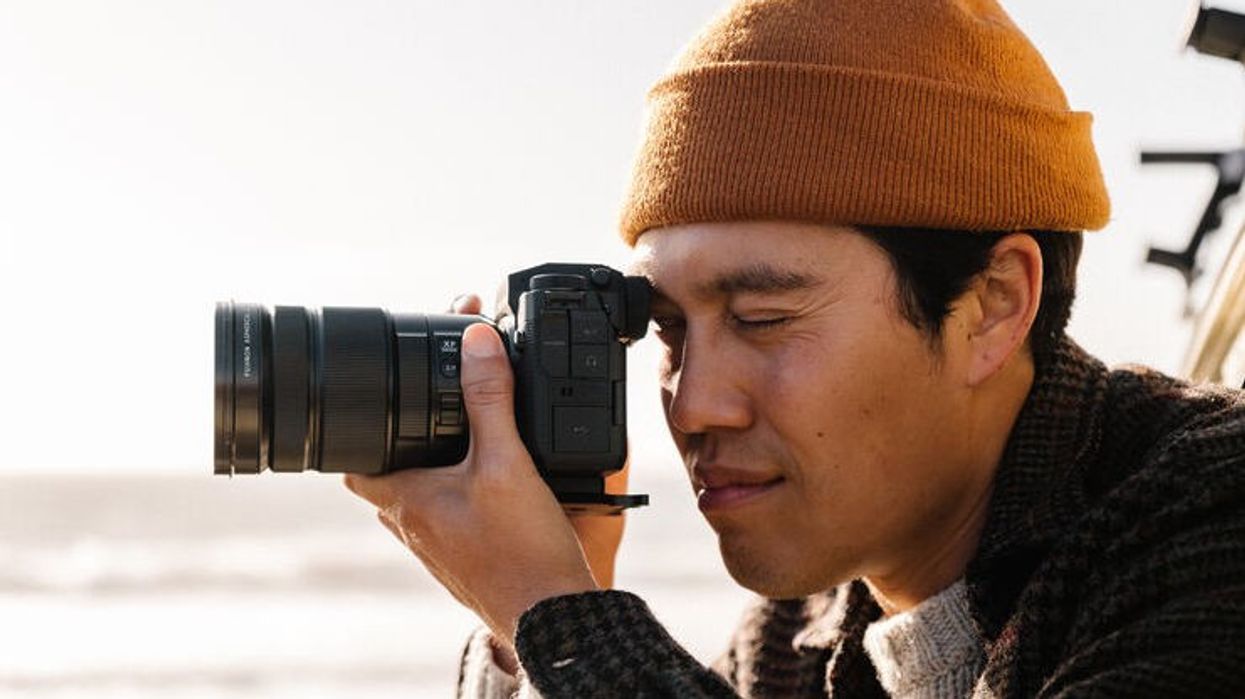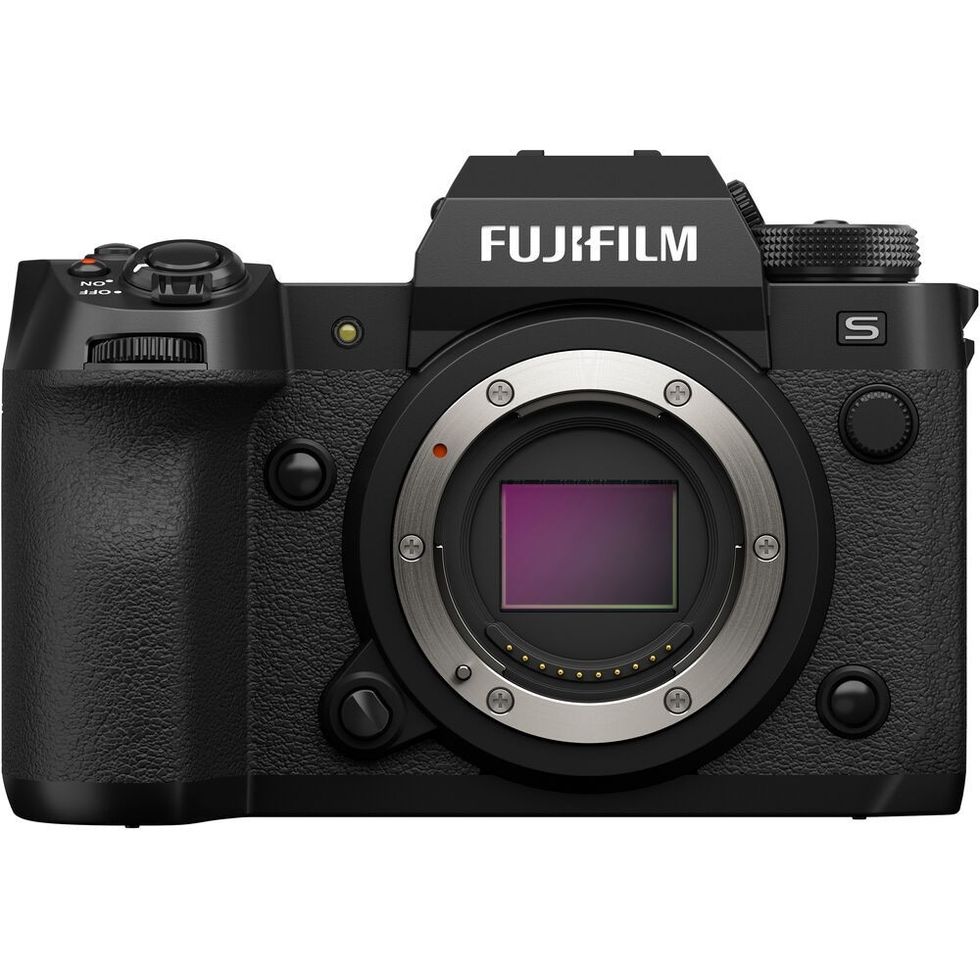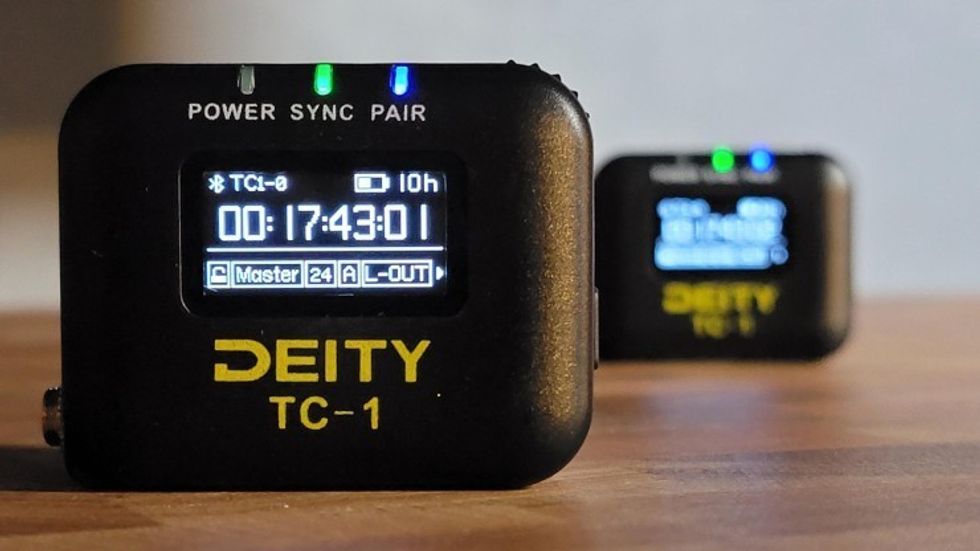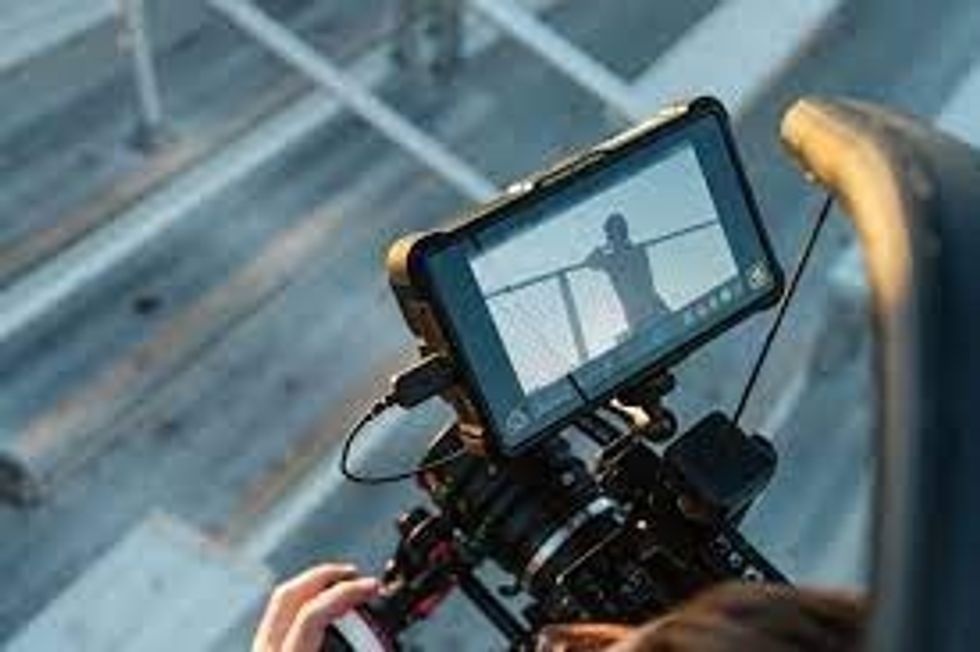Why Are You Sleeping on the Killer Feature of the Fujifilm X-H2 Line?
There are a lot of fun things about the Fujifilm X-H2s, but there's one that deserves all the attention more than any other.

When we moved from dedicated video cameras, which at the "affordable" price point all had integrated lenses, to still cameras that shoot video and let us swap lenses, there was one major feature that we lost.
In addition to everything else it does (internal ProRes video recording, great low light and color performances, great off-speed shooting), there is one stand-out feature of the X-H2s that makes it a killer for video shooters. That only makes it a camera that I'd likely buy as a starting-out filmmaker or stock for an Introduction to Filmmaking class.
Why? The answer is simple: It brings back a feature we old-school filmmakers used to have in those integrated cameras all those years ago.
So, this isn't a full, in-depth review of every single little feature on this camera. Instead, this is a mini-review about a few things you should be thinking about if you are thinking about buying this camera, and about the one big thing that should have you thinking about with this camera.
But before we get to that, let's talk about a couple of other things.
Fujifilm Won't Do Full-Frame
The first thing to wrap your mind around is that Fuji is sticking with APS-C (roughly Super35mm), and medium format. Fuji just won't do full-frame.
They've made the official statement at various times that they aren't that into full frame as a capture format (they make some very nice full frame zooms), and they don't want to do it. They view their formats as X (APS-C) and G (medium format). On top of saying they are not going to do it, they keep making cameras like the X-H2s that make full frame not seem worth it.

Honestly, I am 100% A-OK with this choice, though I have a bias of having shot a lot of Super 35mm film, then digital over the years. With Fuji, I like the color results I get out of the camera with the least amount of work, and that is always going to go a long way with me.
But beyond that, I honestly don't know if I would go over to full frame even if Fujifilm offered me something. I spent most of my career working in Super 35mm, and I quite like it. It's a nice balance between being small enough to look good with a smallish depth of field but still enough depth of field that when working in really low light we can still get things in focus. I
have done some gigs on the ARRI Alexa LF and it's beautiful, but holy cow! In low light is the depth of field tiny. A truly tiny depth of field isn't always practical, and the combination of a slightly bigger depth of field in this sensor size with some pretty nice low-light image quality works just fine.
I only really want to work with larger sensors when working with a first AC, wireless follow focus and a big monitor. So, for me, the Alexa LF and other big sensor cinema cameras are fun, but I don't think I've ever done - or want to do - a shoot all by myself with an Alexa LF.
However, those tiny crew shoots need more depth of field, so I'm just happy going out with Super 35mm sensor sizes when shooting with a smaller crew. As someone who once shot a gig on 35mm without a crew (pulling my own focus on a MovieCam Compact), I like having at least a hint of room for error.
The Tiny Niggly Feature
Some things have become necessary for camera design, and one company is known for it.
Dual-native ISO, for instance. It was the VariCam, and only them for a long time, but now pretty much everybody has a dual-ISO option. There are two little things I just wish everyone would steal immediately, and I hope Fuji steals them soon.
First, Blackmagic implemented a timecode in over the mini-mic port that automatically detects the timecode and records it (not audio timecode over LTC, but real timecode into the file). Everyone needs to rip that off.
Second, Sony has dual CFexpress/SD card slots (at least they did in the A7S3), and, man, I wish everyone would just run with that.
That absence isn't a major hurdle here. Fuji has a single SD card slot and a single CFexpress slot. A good-sized CFexpress card can get you through a lot of shooting, and, of course, you can swap cards.
The current dual slot setup works well for full res files in one card and proxies in another, which is a workflow I couldn't even imagine a camera at this price point offering a few years ago. It's not a deal breaker.

Having the ability to run timecode when working with Atomos and Blackmagic also solves the issue. If you need a timecode, there is a workflow that works. Plus, you can always use a tentacle.
There are options, but the real key here is that when you are bumping up to a timecode job you are likely on another camera platform anyway, so while I'd love timecode personally because I like to feel flexible and covered. I could do it if I needed it, but I don't know that I would use it as much as I think I would. As much as I love how Blackmagic has done it, I have only needed to pump timecode into a Pocket 6K Pro once in the 2 years they've been out.
It's one of those features that are "nice to have" but not mandatory.
Double Raw
Off the top of our heads, the X-H2 lineup and Fuji in general are the first cameras to support both ProRes Raw (into Atomos records) and Blackmagic Raw into a Blackmagic Video Assist. That right there is pretty darn groundbreaking.
The benefit here is flexibility for the freelancer. If you are a shooter with a variety of clients, you don't know what format they might want going into their pipeline. Locking yourself into only ProRes Raw or Blackmagic Raw is inherently limiting, especially since ProRes Raw isn't supported in Blackmagic DaVinci Resolve and likely won't be at any time in the future.
If you are exclusively working on your projects, you are going to settle into your workflow and call it a day. But if you are working for a variety of people, as most people are, the ability to have an Atomos for ProRes raw but then rent a Blackmagic Video Assist for a Blackmagic Raw client is huge.

That Big Feature
Alright, after a long time buying the lede, it's time to talk about the thing that makes the X-H2s so wildly interesting. That feature is not part of the X-H2s, but it's the lens that is designed to work with the X-H2s as a partner: theFujifilm XF 18-120mm f/4 LM PZ WR zoom lens.
If you don't know the term, parfocal refers to a lens that is designed so you can zoom in and out and the focus stays in the same place. Still, photo zooms don't do this. If you zoom in, get focus, and zoom out, the focus will drift. The issue is that motion picture zoom lenses need to hold that focus. If you were ever taught to "zoom in to check critical focus" you were taught to do that on a parfocal lens. Your integrated lens cameras like the DVX-100 (which people still shoot on, which is wild) were parfocal.
Now, the XF 18-120mm isn't parfocal. No lens at this price point would be. You need to bump up to the Fuji MK zooms to get true parfocal lenses. But the XF 18-120mm is clearly aimed at video shooters, with a smooth zoom rocker built in for doing "smooth" zooms that are usable in a motion picture context, or at least as usable as you would ever get out of similarly priced "pure video" cameras. The insane auto-focus of the X-H2s combined with the zoom rocker of the XF 18-120mm makes it feel like you are running around with a Panasonic AG-DVX100B.
There is no real competitor here. There isn't a Nikon or a Canon or a Sony setup where you can get a camera/lens pairing that does what this camera/lens pairing does in terms of replicating a traditional video camera feel, but doing it on a larger sensor (bigger than the 2/3" you saw on better video cameras), with amazing internal ProRes and external raw.
Of course, I said it's not parfocal, and it's not. But here is where the magic comes in.
That LM in the lens name stands for "linear motor," which is the code you want to look for lenses to truly take advantage of all the auto-focus capability on hand here. The combination of that LM with the mind-boggling great auto-focus capabilities of the lens makes this lens feel parfocal.
I ran around shooting with it and kept zooming in and out without ever worrying about focus drift because the amazing auto-focus kept things mostly useably sharp in a way that I wasn't used to when working with a still photo zoom on a mirrorless camera.
Every once in a while, especially if I zoomed too fast, it would bump a bit, but you could do those nice slower zooms and the combination of the lens and body worked together to make it feel more like a traditional video camera than I have used in years.
That's the killer combination here. Fuji's history of lens design and motion picture lens design coming in combination with its amazing camera platform color science has hit a truly fascinating sweet spot.
Summing It All Up
It's everything.
I think the X-H2s are worth it for filmmakers for the faster auto-focus and rolling shutter. I've never really cared all that much about resolution once we got past 4K (honestly, having 6K is amazing on its own in this camera) and I'm not worried about not having the full 8K of the X-H2S. I haven't delivered to 8K often, and I don't think I will be anytime soon. Over-sampled 4k looks great from this thing. And the better rolling shutter is just worth it. The only filmmaker who should think about the two instead would be someone doing a lot of studio work.
If you are always on a tripod/dolly, with very slow-moving subjects (maybe working a bit in product work), the X-H2 might maybe seek out a win, but for the vast majority of us, the X-H2s is the winner.
What this makes me hungry for is a $5000 Fuji cinema camera. It's unlikely, since Fujifilm has a big market in people who buy their lenses for other cameras (especially Sony and ARRI), and it doesn't seem like Fuji wants to step on their toes. But, holy cow the X-H2s mechanics in a body with full-sized XLR inputs and real i/o would be killer.
That said, right like it is pretty darn killer right now.
Let us know what you think in the comments below!
- Here Are The Fujifilm X-H2s Features Every Filmmaker Needs ›
- Camera Rumors: Price and Specs Have Been Leaked for the Upcoming Fujifilm X100VI ›
- Fujifilm’s Stunningly Viral and Compact X100VI Camera is Finally Here ›
- Fujifilm Fans Are Reportedly Creating Stickers to Fake Owning the New X100VI ›
- Three XF and GF Lenses for Fujifilm Filmmakers | No Film School ›
- Fujifilm to Host Second Annual ‘Create With Us’ Event for Fuji Shooters and Visual Artists | No Film School ›

 'A Different Man'via A24
'A Different Man'via A24 'Bodies Bodies Bodies'via A24
'Bodies Bodies Bodies'via A24 'Past Lives'
via A24
'Past Lives'
via A24










